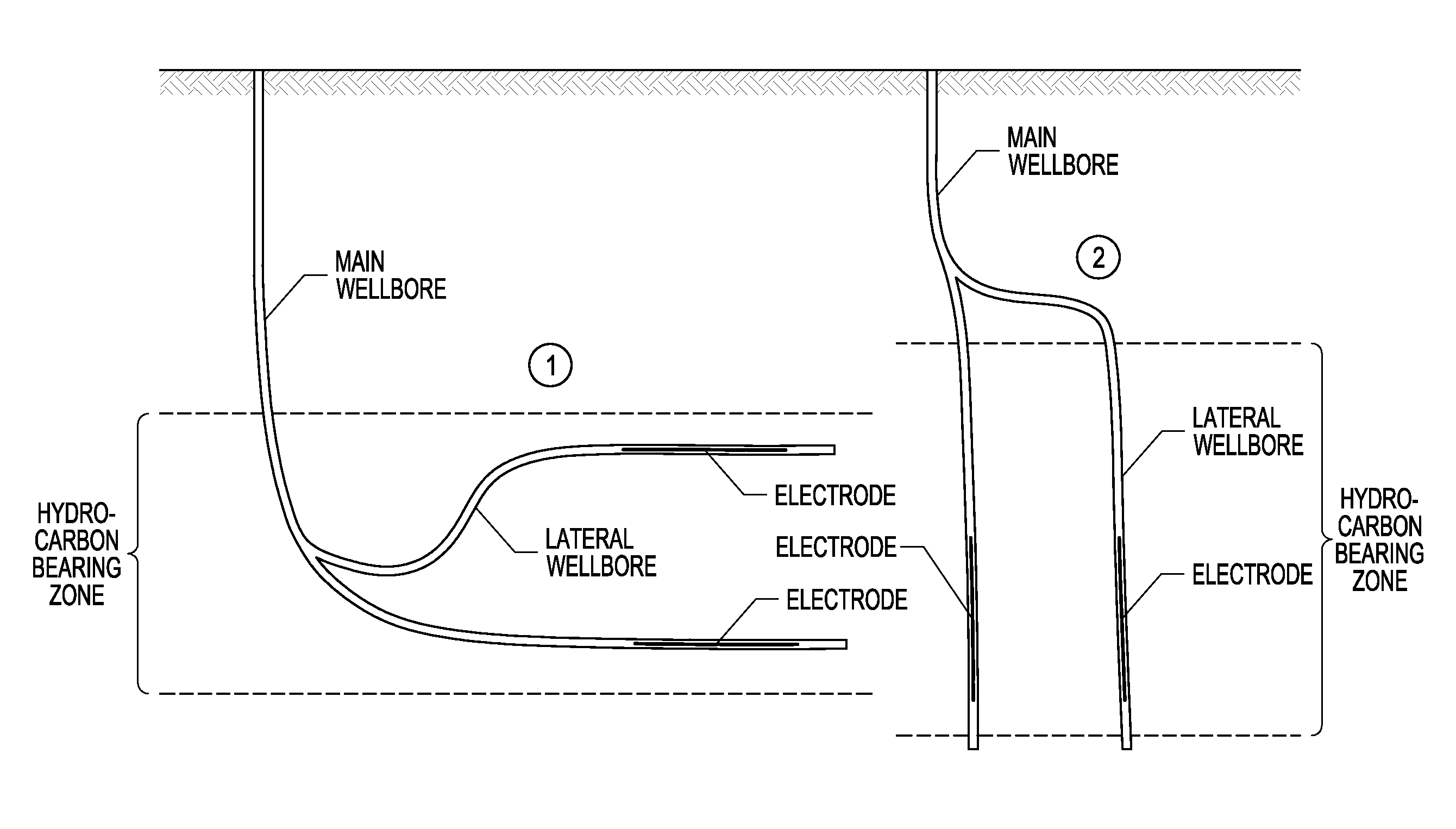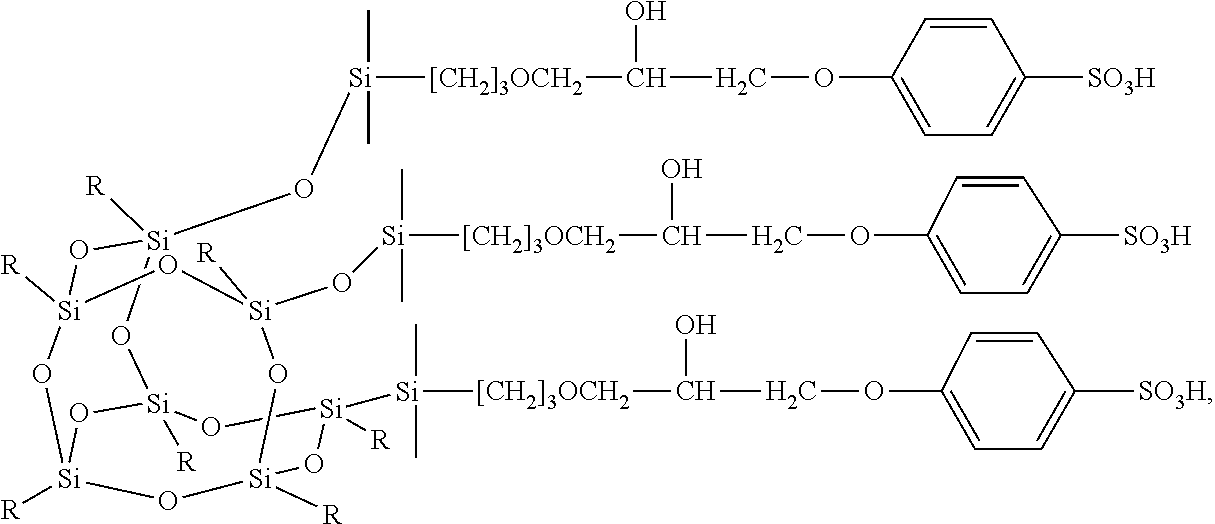Electrorheological or magnetorheological compositions for treatment of subterranean formations and methods of using the same
a technology of electromagnetism and composition, applied in the direction of fluid removal, chemistry apparatus and processes, borehole/well accessories, etc., can solve the problems of difficult recovery and difficult pumping of high-viscosity fluid to the fracturing site, and achieve the production performance of high- or low-viscosity fluid, improve the fracturing treatment and the transport properties of fracturing fluid, and enhance the effect of transport properties
- Summary
- Abstract
- Description
- Claims
- Application Information
AI Technical Summary
Benefits of technology
Problems solved by technology
Method used
Image
Examples
example 1
Hypothetical Example
[0069]A lateral wellbore is drilled from and parallel to the main wellbore. Both wellbores extend into a hydrocarbon bearing zone and are in fluid communication therewith, as depicted in FIG. 1. FIG. 1 illustrates a horizontal (left, 1) or vertical (right, 2) wellbore configuration, each with a main wellbore and a corresponding parallel lateral wellbore. An electrode is installed in each wellbore. While injecting a fracturing fluid (prepared from an ER fluid) into the hydrocarbon bearing zone through the perforated interval of the main wellbore at flow rate to generate an effective pressure to create one or more fractures into the formation, an electric field is applied between the main and lateral wellbores to manipulate and enhance transport properties of the fracturing fluid. Hydrocarbons from the hydrocarbon bearing zone are recovered through the main wellbore production interval.
[0070]The following actions are performed:[0071]1) Providing hydraulic fracturin...
PUM
| Property | Measurement | Unit |
|---|---|---|
| temperature | aaaaa | aaaaa |
| diameter | aaaaa | aaaaa |
| diameter | aaaaa | aaaaa |
Abstract
Description
Claims
Application Information
 Login to View More
Login to View More - R&D
- Intellectual Property
- Life Sciences
- Materials
- Tech Scout
- Unparalleled Data Quality
- Higher Quality Content
- 60% Fewer Hallucinations
Browse by: Latest US Patents, China's latest patents, Technical Efficacy Thesaurus, Application Domain, Technology Topic, Popular Technical Reports.
© 2025 PatSnap. All rights reserved.Legal|Privacy policy|Modern Slavery Act Transparency Statement|Sitemap|About US| Contact US: help@patsnap.com



